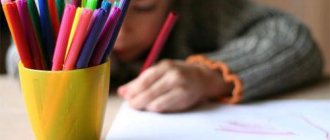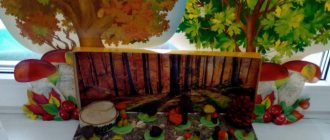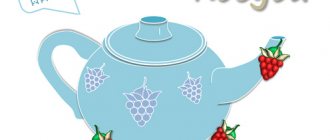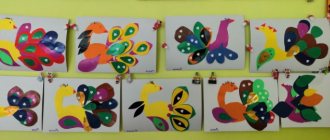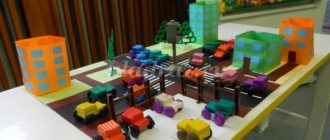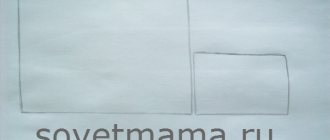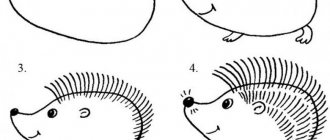Abstract of GCD for drawing on the topic “Adult Labor”
Fatimet Yahutl
Abstract of GCD for drawing on the topic “Adult Labor”
Abstract of GCD on aesthetic development. Drawing .
Topic: " Adult Labor "
.
Expand your understanding of professions. Introduces the profession of a janitor.
Cultivate a desire to provide assistance and pay attention to those in need. Enrich cognitive knowledge (familiarity with tools, objects of work of a janitor )
.
Generalize knowledge about the required professions. Show the importance of the janitor profession, cultivate a respectful attitude towards working .
Materials: broom, broom, paints, album sheets, jars of water, brushes.
On the topic: methodological developments, presentations and notes
Organized educational activities with children of middle preschool age Goal: to expand and enrich children’s ideas about professions, tools, and work activities. Integration of education.
Program content. Teach children to convey their impressions of their favorite fun and entertainment in drawings. Initiate a search for visual and expressive means to convey movement.
summary of a lesson in visual arts in the junior group of the Ladybug kindergarten.
This book offers a system of classes in drawing, modeling and appliqué, developed on the basis of the provisions and objectives of the “Program of Education and Training in Kindergarten” edited by M.A. Va.
PrefaceThe visual activity of 4-5 year old children attending kindergarten continues to develop. This is due to the development of mental processes, the acquired experience of cognition of the surrounding environment.
Source
Summary of a drawing lesson in the middle group. Theme "Professions".
Elena Bulgakova
Summary of a drawing lesson in the middle group. Theme "Professions".
Summary of a drawing lesson in the middle group. Theme "Professions".
Goal: Expand children's understanding of the visual possibilities of paints. Strengthen the ability to name primary colors, learn to select the right color when creating a certain image. Cultivate compassion and kindness.
Material. An uncolored rooster drawn and cut out of paper. Landscape sheet with a drawn silhouette of a rooster, red, yellow, blue and green gouache, brushes, jars of water, rags (for each child).
Preliminary work: Introduce children to V. Suteev’s fairy tale “The Rooster and the Paints.”
Progress of the lesson
Educator:
— Children, today an unusual guest came to our garden. Do you want to meet him?
Children's answers.
Educator: Shows an unpainted rooster and says on his behalf:
“Everyone laughs at me, they say that I am not painted, that I am not real. They told me to go to the artists. They have some paints they can use to paint me.”
Educator: Children, what is on my table?
Children's answers. Paints.
Educator: What are they called? What color are they?
Children's answers: Gouache paints. Red, blue, yellow and green. - And
Educator: Well done! Oh, you can draw with them.
Children's answers: Sun, grass, apple, tomato, sky.
Educator: Correct. With their help, you can paint any object, and it will turn from unpainted into a real, beautiful one.
The teacher asks the children on behalf of the rooster: “Can you guys color me?”
Children's answers: Yes.
Educator: “Of course we can, today we are artists and we have paints. Look how we will make you a real rooster: we will paint the comb and beard with red paint (as we explain, paint the carved rooster, blue paint the feathers on the tail, green paint the wings, and yellow paint the breast... What a beautiful rooster it turned out to be."
The teacher gives the children album sheets with silhouettes of roosters and offers to help the roosters - color them - using all four colors in their work.
Progress of the lesson.
V.: - Guys, look how warm it is outside. Let's hold hands and transfer our warmth to each other. Well done! (Children hold hands and form a circle.)
V.: Attention! Let's get ready to work! (Children should stand in a circle, facing the teacher)
V.: Look around and say: What time of year is it now? (spring)
.
After what time of year does spring come? (after winter)
. Winter is over, spring has come, and everything around has changed. How has the area changed since spring arrived? (The snow has melted, puddles have appeared, the trees are coming to life, leaves will soon appear, the sky is blue, clear, the sun is shining brightly, it’s warm outside)
Do you want to take a walk on the property? (YES)
.
Why? (It’s warm outside, the sun is shining brightly, the area is clean and beautiful)
. Guys, early this morning, when I was going to work, I saw this object on our territory.
What do you think this is? (broom)
.
Guess who we'll be talking about today? (About the janitor)
.
He will wake up at dawn
The snow will be cleared in the yard.
All paths will be swept
And the ice will sprinkle sand.
